I have only tried one other IBG kit to date, the A9 Cruiser Tank MK I, part of their World at War series, and it wasn’t bad at all. It came with tracks and running gear moulded as a single part for each side, and the only disappointment on that kit was that the tracks were completely lacking in detail. Some kits from this Polish manufacturer have a reputation for being extremely difficult to build – they offer several versions of the British Universal Carrier for example, and I believe that these include link-and-length tracks. Attempting link and length tracks on a 1/72 Universal Carrier sounds like quite a challenge, so I haven’t been tempted by those.
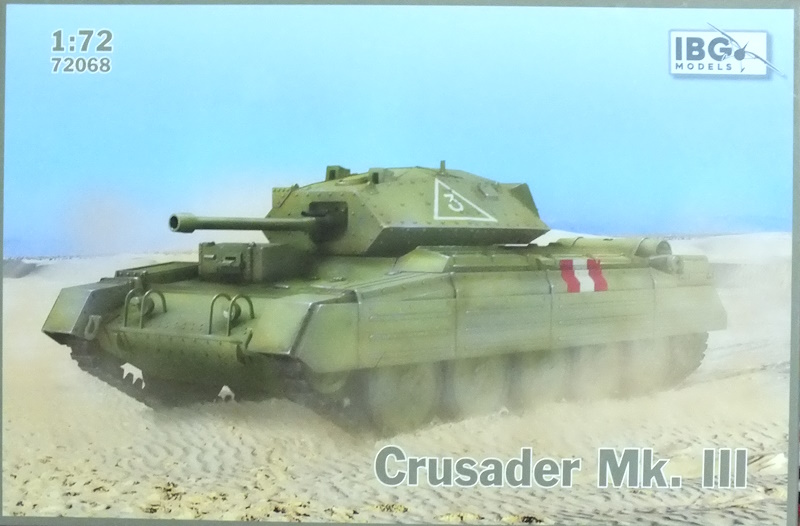
This kit was released in 2019 and I know that, like the A9, it includes tracks that are moulded as a single part per side along with the inner parts of the roadwheels, sprockets and idlers. That can be a good way to create tracks for small-scale armour, but it can also lead to simplification of both tracks and running gear. If you’re a regular reader, you’ll know that poor tracks have marred many armour kits for me. Will these be any good? We’ll take a peek inside the box soon, but first, let’s talk briefly about the Crusader Mk III.
History
When it entered service in late 1940, the Crusader was by far the best British Cruiser Tank to date. However, given that most of the preceding cruisers had been dismally bad, that wasn’t a high bar to achieve – its immediate predecessor, the visually similar Cruiser Tank Mk V Covenanter, had such catastrophic overheating problems that it was never used in combat despite a pressing need for tanks in North Africa.

A pair of Crusader MK Is in North Africa, recognisable by the auxiliary machine gun-turret on the right side of the front hull.
The Crusader, or to give it its full and rather cumbersome title, the A15 Cruiser Tank Mk. VI Crusader, entered service too late to see combat in France and its initial deployment was as part of the 7th Armoured Division in North Africa. The first Crusaders to arrive in North Africa took part in Operation Battleaxe, a British offensive intended to break the siege of Tobruk. That operation wasn’t a success and, when facing the panzers of the Afrika Korps, the new Crusaders proved to be too lightly armed (with the same QF 2-Pdr main gun that had been mounted in all previous British Cruisers) and too lightly armoured, with just 40mm of frontal armour.
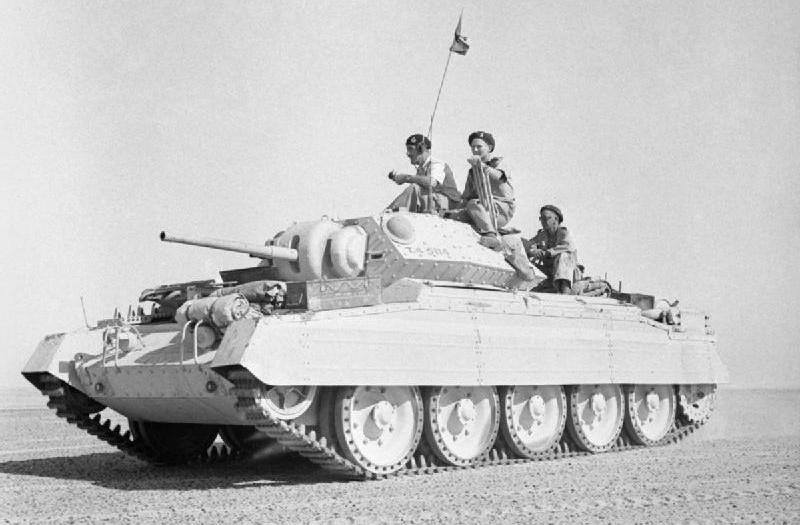
A Crusader Mk. II in North Africa. No auxiliary front machine gun turret and additional armour, but still armed with the QF 2-Pdr main gun.
That led to the Crusader Mk II, with improved frontal armour (increased to 49mm) and with the auxiliary machine gun turret on the front hull removed. That was an improvement, but only marginally and it wouldn’t be until late 1942 that the subject of this kit, the Crusader Mk. III, armed with a more powerful 6-Pdr main gun, finally began to arrive in North Africa.

A Crusader Mk. III with 6-Pdr main gun in North Africa. This is one of the tanks for which decals and a suggested colour scheme are provided with this kit.
The 6-Pdr main gun was certainly an improvement, but the size of the breech meant that there was space in the turret for just two crew, the commander and gunner (a loader had been included in the Mk I and II). Crusader Mk. IIIs were used in combat in North Africa and Tunisia up to their final engagement at the Battle of Wadi Akarit in Tunisia in April 1943. By that time, British tank units were re-equipping with the M4 Sherman and after that, the Crusader was used mainly in the UK for training and home defence.

A Crusader Mk. III in Tunisia, late 1942. The Tunisian campaign was the last time that the Crusader was used in combat.
The Crusader was better than previous British Cruiser tanks, but it was far from perfect. The Mk. III with the 6-Pdr gun was an improvement in terms of firepower, but losing the loader led to a reduction in rate of fire. All Crusaders suffered from reliability problems, particularly in the heat and dust of North Africa and Tunisia. Its engine was the Nuffield Liberty L12, a complex and fragile derivation of a 1917 aero-engine design – more than half of all Crusaders lost During Operation Battleaxe were sidelined due to mechanical breakdowns. Some people claim that the Crusader, and particularly the up-gunned Mk III, was the best mid-war British tank. Personally, I feel that “least worst” might be a better description…
What’s in the Box?
Inside the large, top-opening box you’ll find 9 small sprues moulded in grey plastic (two identical sprues provide the outer roadwheels, sprockets and idlers), the two track/running gear mouldings, decals, instructions and a PE fret that includes the side-skirts.

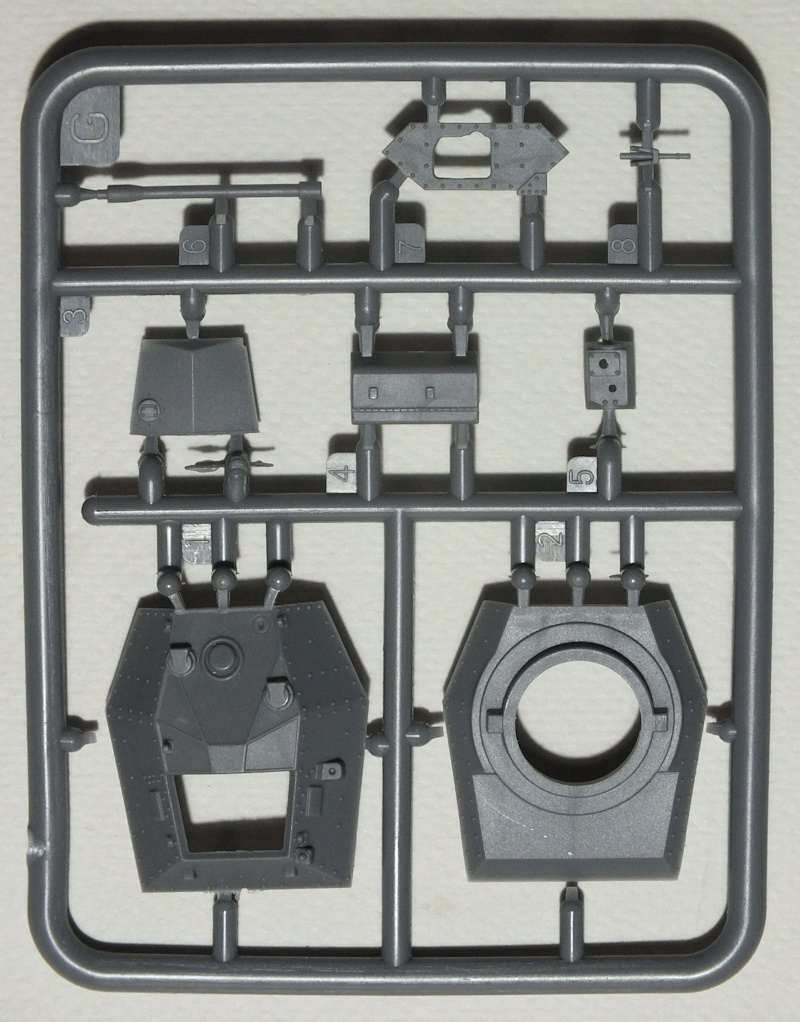
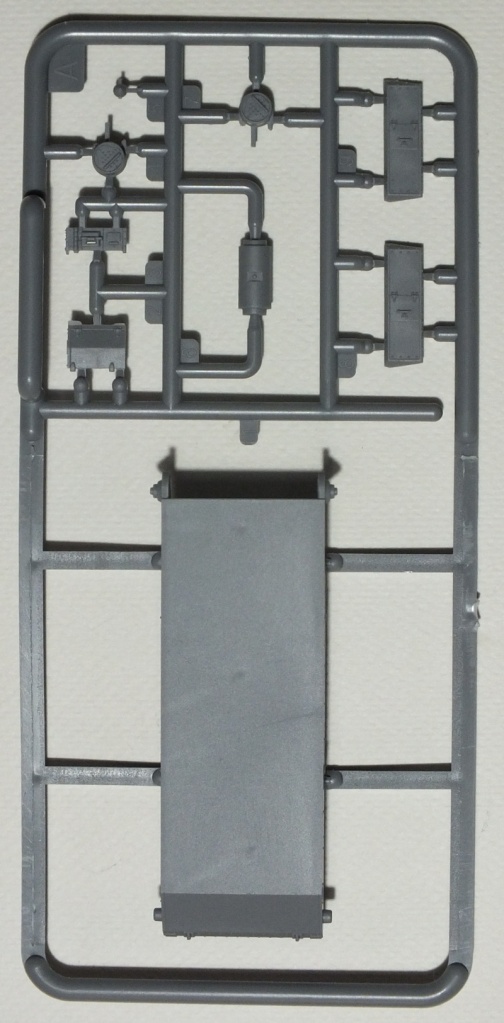






I was recently disappointed by the new AIrfix 1/72 Tiger kit, partly because the surface detail was so soft. Here, I’m delighted to report that the mouldings and detail look sharp enough to shave with.

Everywhere you look you’ll see really sharply moulded detail and what’s provided seems appropriate for the Mk III Crusader.

Even some very small parts are very nicely detailed indeed (the front of the driver’s armoured box is shown below) though no slide moulding is used here so you will need to drill out the main gun .

Two alternate versions of the track-guards are provided: one set for use with the supplied PE side-skirts and one if you want to show this model without side-skirts. None of the hull or turret hatches can be shown open and no tools or stowage items are included.
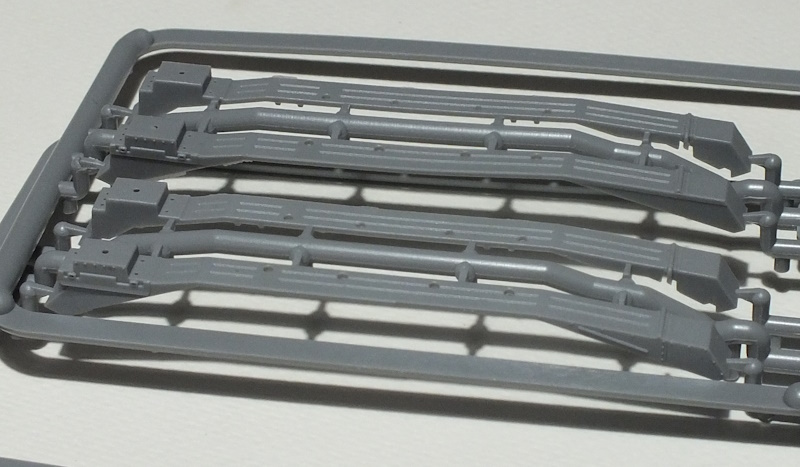
What about the tracks? Well, hold your breath folks, because these are amongst the best small-scale armour tracks that I have yet seen! OK, the inner roadwheels and in the inner halves of the sprockets and idlers are moulded as a single part integral with the tracks, but that doesn’t seem to have compromised detail at all.

On the outside, these are even better. The tracks on the Crusader were narrow and featured small links, and I really didn’t expect to see much detail here given that they are so tiny (you’ll see the tracks next to a match in the image below to give and idea of just how small they are). Instead, the links and tread detail are beautifully rendered and look accurate. Top marks to IBG for these tracks alone!

The PE fret makes me a little nervous. I think I can deal with the tiny headlight protectors, but a thin section along the top edge of the side skirts has to be bent at 90˚ and that looks as though it might be very tricky to do accurately. I might begin the build on this kit by attempting to bend the PE side-skirts to see how they look. It they don’t turn out well, I’ll model this as a Crusader in the UK without side skirts.

Decals are provided for three tanks, one used in North Africa in 1942 by an unknown unit, one used by a Polish unit in the UK in 1942 and one for a tank of the 6thArmoured Division in Tunisia in 1943.

Two colour schemes are suggested: two in overall Olive Drab for tanks used in the UK and Tunisia in 1942 and 1943 and one from an unknown unit in North Africa in 1942 with a base of Light Stone and a disruptive camo scheme in Dark Brown. If you want to build this kit without side skirts, only the scheme and decals for a Polish unit in the UK in 1942 are appropriate.
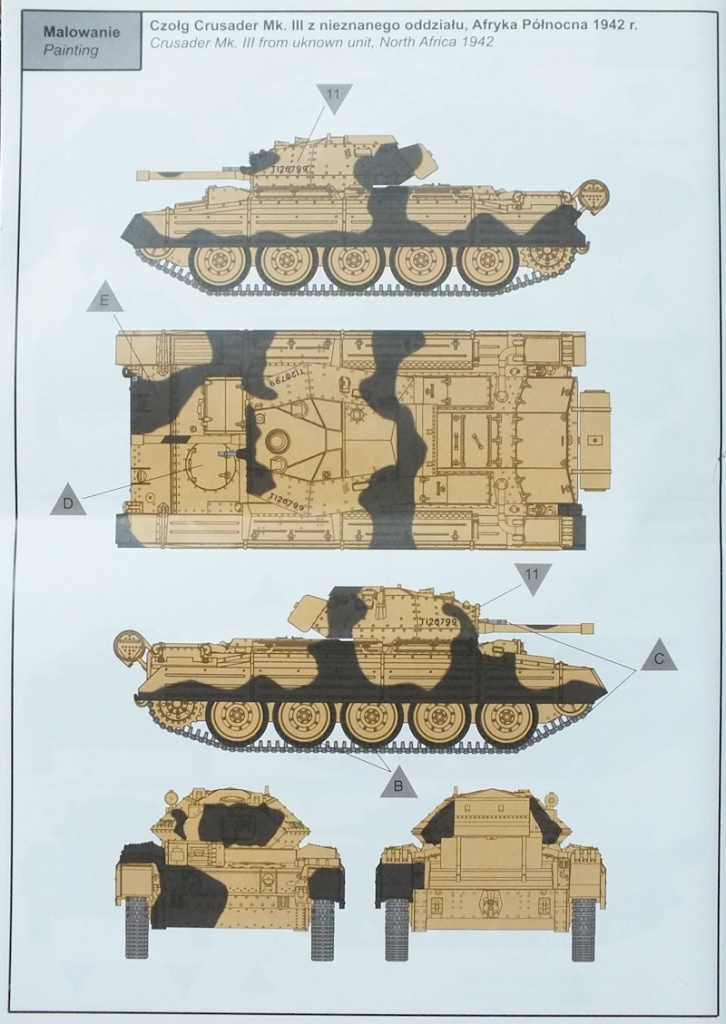

Would You Want One?
Looking at this in the box, the answer would seem to be an unequivocal: Yes! The mouldings are delightfully sharp, detail looks good and I can’t see anything here that doesn’t look accurate. The tiny tracks in particular look really outstanding and fairly simple to work with and the overall level of details looks very good indeed. I won’t know about fit until I begin the build of this kit, but what I see in the box looks very promising indeed.
If you don’t fancy this one, then I’m afraid that your choices of Crusader Mk III in 1/72 are very limited indeed – why is it that are so few kits of British tanks of World War Two, I wonder? The Hasegawa Crusader MK III dates from all the way back in 1975 and it isn’t bad in terms of detail, though the mouldings are not as crisp and detailed as those in the IBG version and feature some visible ejector marks. This kit comes with rather thick vinyl tracks and the Revell 1/72 Crusader Mk III released in 2001 is simply a re-box of this kit. One thing missing from the Hasegawa/Revell kits are the side skirts, and these do seem to have been fitted to all Crusaders used in North Africa and Tunisia, and it’s for those theatres that decals are and colours schemes are provided. You’ll either have to ignore this or build your own side-skirts.

As far as I know, the only other small scale option is the Airfix 1/76 Crusader Tank (but it’s really a MK III), released back in 1971. I don’t think that this kit has never been re-released as part of the Vintage Classics series, and I’m afraid that it isn’t great even if you can find one. The hull is too narrow, detailing is pretty clumsy and the rubber-band style tracks are much too thick and rather nasty. If you do want to build a small-scale Crusader Mk III, this IBG appears to be the only recent option, so it’s fortunate that it looks like a pretty decent little kit.
Related Posts
IBG Models 1/72 Crusader Mk. III (72068) Build Review – coming soon
IBG Models 1/72 A9 British Cruiser Tank Mk.I with 2 pdr Gun (WAW011) In-Box Review and History


looks good, I’m tempted. You ask ‘why is it that are so few kits of British tanks of World War Two, I wonder?’ My guess, we’ve been ‘told’ ad nauseam that German stuff was wunderbar..ergo we were crap, therefore no one is interested. Anyone still thinking this should go away and read John Buckley’s “British armour in the Normandy campaign” immediately… as an aside, I was at the Aviation Bookshop in Tunbridge Wells a few weeks ago. There I was told that, even now in 2024, for every 6 books on WWII aviation sold, 3 would be Luftwaffe, only 1 would be RAF. I guess in the armour ‘popularity’ stakes it must be a similar story…
Neil
https://falkeeinsmodel.blogspot.com/
LikeLike
Thanks for the comment. German armour of World War Two (and German military hardware generally) does seem to get a disproportionate level of coverage in books and elsewhere. I’m not sure why that is. It seems to me that many German tanks (the Panther springs to mind) were seriously flawed, yet they seem to be regarded as some kind of ultimate. Personally, I find the story of British armour in World War Two fascinating, partly because it involved so many mis-steps before an effective Cruiser Tank was finally developed in 1944: the Comet. I’d love to see more decent small-scale kits of British AFVs.
LikeLike
Exciting – i love IBG kits – will be keenly following your build Steve!
LikeLike